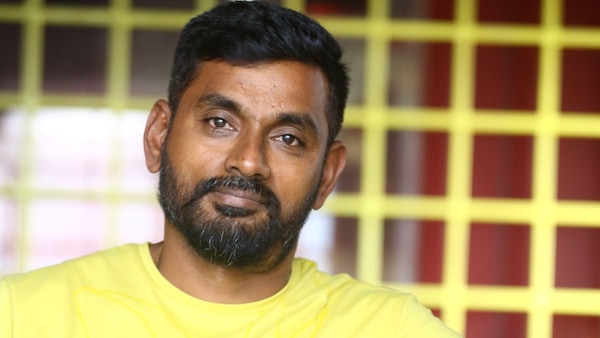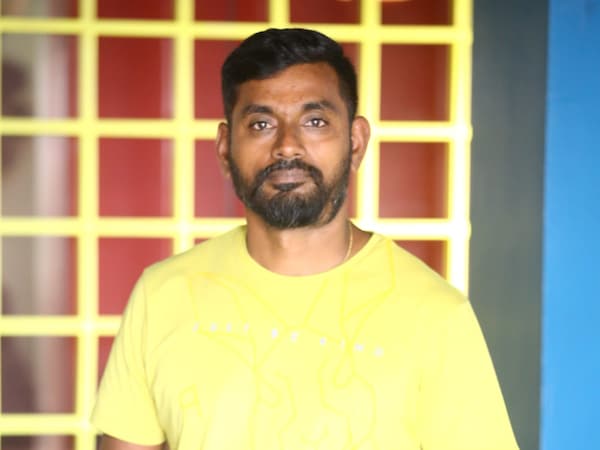Exclusive! Art director Sahi Suresh: I’m more aware of our history and cultural roots after Karthikeya 2
On a high after the success of the mystical thriller Karthikeya 2, the technician looks back at his beginnings, carving his niche across various genres and offers a sneak peek into his work ethic

Last Updated: 01.28 PM, Aug 17, 2022
Art director Sahi Suresh, born in Madanapalli, Andhra Pradesh, is among the most sought technicians in Telugu cinema today and his filmography over the last decade is a testimony to his versatility. From period films to thrillers to masala potboilers, indie films and romances, he adapts to every genre and filmmaker like a fish to water.
The technician has been associated with several big releases lately- Karthikeya 2, Macherla Niyojakavargam, Ramarao on Duty to name a few. Karthikeya 2, which is making a mark across multiple industries, has brought him a lot of fame. The recognition for its production design is the perfect birthday present (born on August 15) he could’ve got. He shares his happiness with OTTplay.com in this conversation.
Owe my progress to my gurus:
I firmly believe my gurus are the reason why I’ve come so far in the industry. Not all are lucky enough to work under such stalwarts - they’re legends in their own right. Peketi Ranga (garu), Ashok Reddy, Bhupesh R Bhupathi and Anand Sai have moulded me and I got to learn various aspects of the craft from them. It gave a great push to my career initially.
Bhairava Dweepam is the film that triggered the art director in me - call it the fascination for comics or the fantasy world, it captivated my imagination. To have begun my career with the film’s art director is a happy coincidence and a blessing. I got a strong foundation for my career and they groomed me so well that work felt like a walk in the park. I never have to struggle for the projects I take up these days.
Earning his first break:
I worked for Anand Sai in Shakti and impressed by my work, Ashwini Dutt entrusted me with Sarocharu. I was genuinely surprised by their gesture and I told them I would take it up if they have confidence in me. The director and Ravi Teja gave a nod immediately. Ravi Teja is among the rare people who don’t think twice while introducing new talent to the industry. I worked in over 40 films henceforth and the rest is history.
On the work and fame for Karthikeya, Karthikeya 2:
Karthikeya was a film that gave a lot of momentum to my career in the industry and we worked very hard for the sequel. We erected huge sets, including the Govardhana hill and shot in several real locations under challenging conditions. The film shaped up beyond our imagination, we were blown away by what we managed to shoot.
The director Chandoo Mondeti had a clear idea of what he wanted; we came up with a lot of miniatures too. We relied more on live locations and ambience. Karthikeya 2 is a film that helped me learn a lot about our history and cultural roots. Being in 2022 amidst modernity and progress, it’s easy to forget where we belong and the film reminds us of that.
Karthikeya 2 offered me immense scope to showcase my artistic sensibilities - from the workspace of the historians to using props in various locations effectively to drive the story forward. The film was an adventure for us too. I am thrilled by the love for the film across various corners of the country.

The essence of art direction as a profession:
Art direction isn’t about diverting the attention of audiences, it’s about keeping them engrossed. The colour play and the sets shouldn’t dominate the story. Just because one has a good budget, they shouldn’t try to force grandeur into the frames. I am very particular about those aspects in my films - I always according to a scene, nothing more and nothing less.
Reinventing oneself film after film:
I never let my work for one film influence the other. The key here is the creative inspiration that the directors offer us. An art director must share a good rapport with the cinematographer and director. The results always show when they have a strong equation. Audiences are smart these days and they know the value that a good technician can bring to a film.
The advantage of shooting a film on sets versus real locations:
Shooting the film on sets makes a lot of difference. It’s not practical to shoot big star films in real-life locations and sets offer us a scope to improvise. These are times when short films are being made on a grand canvas and it’s important to work on the details that would make for a worthy big-screen experience. This augurs well for the industry and we can deliver better results.
Two major milestones in his career:
Kanche and the NTR biopic are milestone projects in my career - I gave it my everything for these films and I’m not sure if I will get such an opportunity later too. The film introduced me to a lot of unknown aspects of our history; we worked under a lot of limitations and still, it brought out the best in us. For period films, we choose lighter, sober colours and a lot of effort goes into creating the props.
We created train sets exclusively for (Kanche and) the NTR biopic. There are lots of sequences where we recreated iconic sequences of yesteryear films - nearly 40 of them. We almost watched all films of NTR garu but making audiences believe that we were shooting for a scene in Pathala Bhairavi, for instance, was a huge challenge. It’s incredibly disappointing that the film didn’t get its due.
Within a brief time, we put our heart and soul into it but sadly, it went unnoticed. I remember director Sudha Kongara calling me to appreciate my work too. It’s a blessing that I got a lot of opportunities to bring alive a different period in a lot of films - Majili, Kanche, NTR biopic, Ramarao on Duty, to name a few.
Unique challenges presented by a few films:
Miss India was a unique challenge. Due to a few reasons, it couldn’t be shot in the US; we went to Europe and again had to return to India. The entire coffee shop set was erected in Hyderabad. We did our best for the ambience to resemble a street in the US. Bulk segments of the film were shot here and the experience helped me push my boundaries. The hallmark of a good art director is to ensure the visual aesthetic isn’t compromised even within limitations.
Prasanth Varma didn’t intend to shoot Awe as a mainstream film; even Nani hadn’t come on board then and the film was to be made with a lot of newcomers. We thought we would shoot a few sequences in different restaurants and bring it all together in the film initially.
However, given the circumstances, we thought it would be best for us to design the entire coffee shop/restaurant set ourselves. Nani happened to spot us and thought we were a creative lot trying to do something different and decided to produce it. It eventually helped us win a National Award. In the future, I want to work on fantasy and mythology films - it’ll offer us immense scope to showcase my range.

 Premium
Premium